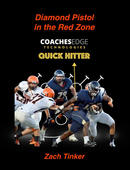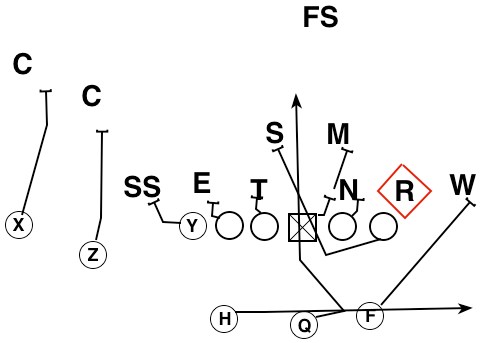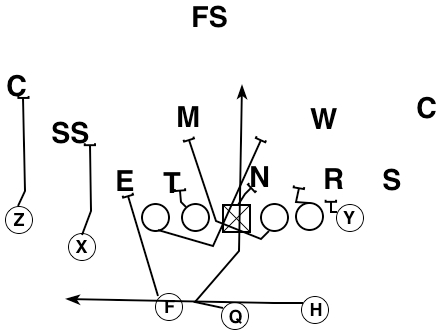What is a Quick Hitter?
The Quick Hitter allows a coach to find information on a very narrow topic. The coaches sharing this topic still provide great detail. The Quick Hitters will be valuable tools for a coach looking for specific ideas. This type of information is useful both the off season as well as during the season. As we build our library, we will incorporate a cutting edge search tool allowing a coach to get the exact resource he needs to solve a problem or improve a certain aspect of his own system. The Quick Hitter gives you the critical information you need right now.
Diamond Pistol in the Red Zone for iPad $4.99
Zach Tinker shares how they utilize the Diamond Pistol formation and a set package of plays to improve their scoring opportunities in the red zone. His approach allowed South Dakota School of Mines to score 42 out of 43 (.977) possessions in the red zone.
Offensive Line Play in the Power Scheme for iPad $4.99
The “Power” scheme is one of the most widely used schemes in all of football. It is a scheme you will see used at every level of football. What I love about the power scheme, and why I chose to add it as a core concept of our running game, is the wide variety of ways I can use the scheme. This one core blocking scheme for the OL, can be used in an exponential number of ways, all dependent on the imagination of the offensive coordinator. Power can be run from nearly any personnel grouping, formation, or backfield action. This Quick Hitter goes through the assignments and techniques of each offensive lineman. Video shows exactly the footwork and technique that the linemen use. This progression goes from learning on air to executing against shields. This attitude play can be learned and repped without pads.
Adding Voltage to Power for iPad $5.99
Coach Girolmo has a unique application of the Power scheme which goes beyond the basics that he explains in setting up the play. Girolmo explains what the “ formation formula” is as well as what he looks for in setting up the formations in his game plan. He follows with the assignments, techniues, and mechanics for all players. Girolmo explains how to use the “coverage trangle” and the T.U.G screen to make the defense pay for exposing its weakness. Girolmo uses a number of variations including one back and two back Power. By adding a mesh read and a pitch man, Girolmo turn the Power scheme into a triple option attack. This Coaches Edge Quick Hitter presents plenty of information and definitely adds some voltage to the Power scheme.
Other Coaches Edge Quick Hitters:
Marrying Stick and Zone Bubble (an RPO) iPad iPhone Google Play more info
Something to Hang Your Hat on Inside Zone iPad more info
101+ Pro Style Pistol Offense Plays: Play Action iPad iPhone More Info
101+ Pro Style Pistol Offense Plays: Pin & Pull Sweep iPad More Info
The Zone Offense-Define the System and Build the Foundation iPad more info
The Zone Offense-Develop the Fundamentals iPad more info
The Zone Offense-Structure a Starting Point and Develop Coaching Methods iPad more info

























